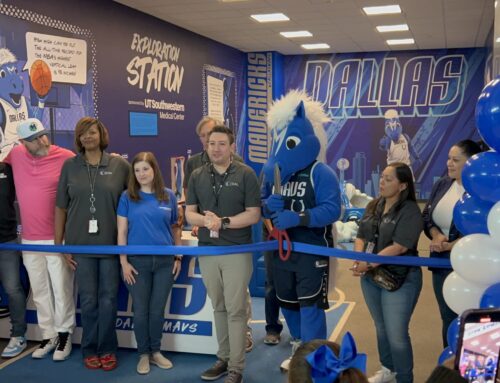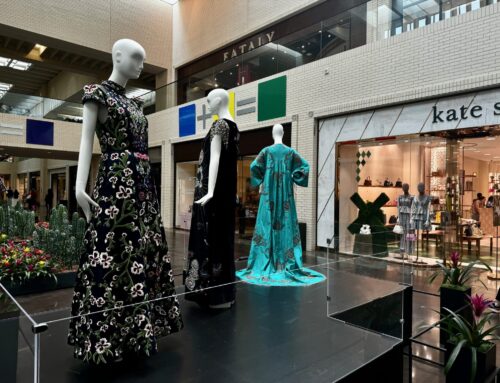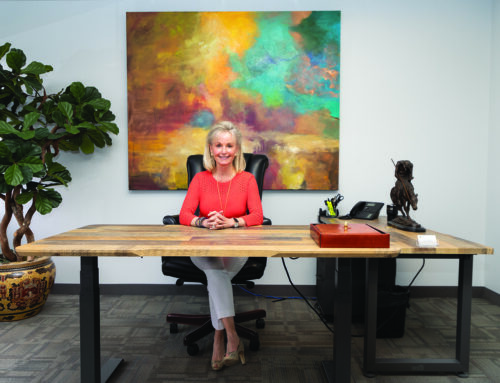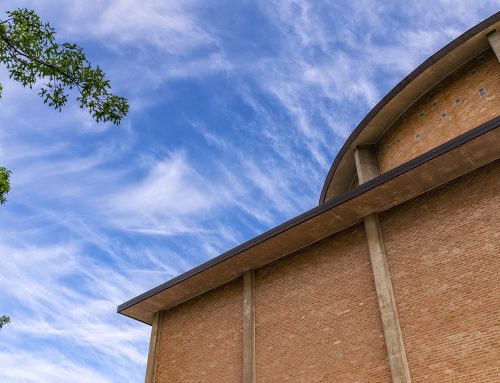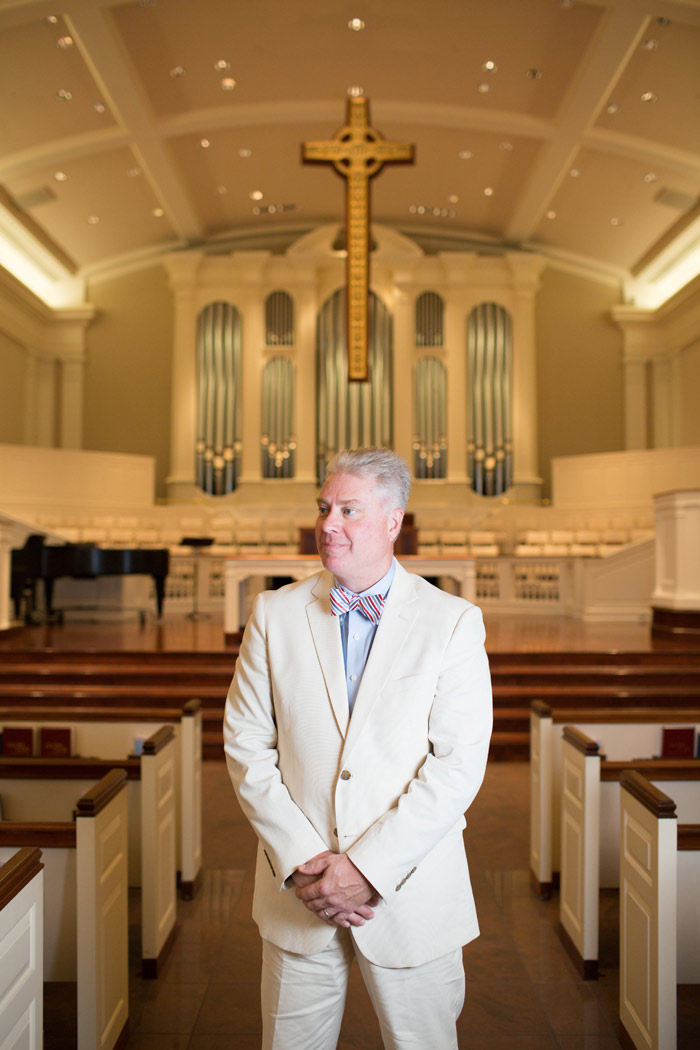
Dr. Paul Seelman fled his home and lost his dog in the midst of Katrina. “It was a sad situation,” he says. “Life was just completely uprooted at the time.”: Photo by Rasy Ran
In August 2005, Hurricane Katrina, one of the most catastrophic weather events in American history, washed away neighborhoods across Louisiana and Mississippi, killing an estimated 1,836. In the days that followed, thousands of people sought refuge in Dallas. Ten years after the storm, evacuees who found a home in our neighborhood, and others who worked with them, share their stories.
Dr. Paul Seelman
The day before Dr. Paul Seelman evacuated New Orleans, he was at the Louisiana Superdome, watching the Saints play its third preseason game of the year.
“We saw the storm was taking a turn for the city,” he says. “We ended up leaving the next day.”
Seelman is the executive pastor at Preston Hollow Presbyterian Church, but when Katrina hit, he was an associate pastor at St. Charles Avenue Presbyterian Church in New Orleans. Many of his colleagues had sought refuge in Houston, so that’s where he and his family drove. His three children were young — 6, 8 and 10 — and Seelman and his wife did their best to explain what was happening back home.
“Your emotions are all over the place whether you’re an adult or child,” he says. “You’re finding different places to stay. You never quite know exactly when and how you’ll get back.”
While living in an unfamiliar city, the Seelmans dealt with an agonizing loss. Before leaving New Orleans, they checked their dog into a canine boarding house. The business had an on-site vet and felt secure. In a gruesome turn of events, the building was destroyed by the hurricane and their dog died. Remembering this is painful for Seelman.
“It was a sad situation,” he says. “Life was just completely uprooted at the time.”
Rather than dwell on this personal tragedy, Seelman began thinking of ways the church could help mend the ravaged city. He holds a master’s degree in urban and regional planning from the University of New Orleans, loves Louisiana and is quite familiar with the lay of the land. Using that knowledge, he helped found an outreach ministry to rebuild some of the most damaged neighborhoods.
“I ended up calling it Rebuilding Hope In New Orleans (RHINO),” Seelman says. “It started off as a way to assist homeowners who had no other means to clear out, or get to, their properties.”
RHINO teamed up with Habitat for Humanity and built multiple homes in New Orleans’ Upper 9th Ward. The organization still exists today, and it is no small enterprise. More than 6,000 people from across the country have volunteered with RHINO since its inception. The ministry now assists with all sorts of disaster relief and has an educational component. Every summer middle school and high school students spend a week at RHINO, learning about community outreach.
According to Greg Beuerman, who sits on RHINO’s board of directors, Seelman has always concerned himself with the people of New Orleans.
“Paul is a really strong preacher,” Beuerman says. “Perhaps more than that he is very, very service-driven. It shouldn’t be a surprise to anyone that RHINO came from Paul’s mind and his efforts. His thoughts and his heart really work that way.”
Seelman has adjusted well to our neighborhood, but New Orleans still tugs at his heart. His brother lives in the city, so he visits occasionally and checks in on RHINO. Though it has been 10 years, Katrina is often on his mind. His family lost several cherished photographs and other mementos to the storm, but some items were recovered. In reflective moods, Seelman looks at the diamond ring set his wife inherited from her grandmother. In her rush to evacuate, she left it behind, and it was damaged by the hurricane.
“We had the whole set refinished,” Seelman says. “But you can still see the watermark from the flooding. That’s kind of neat. I don’t want to forget. I want to remember the people who helped me, who helped all of the people they didn’t know.”
Eve Herman
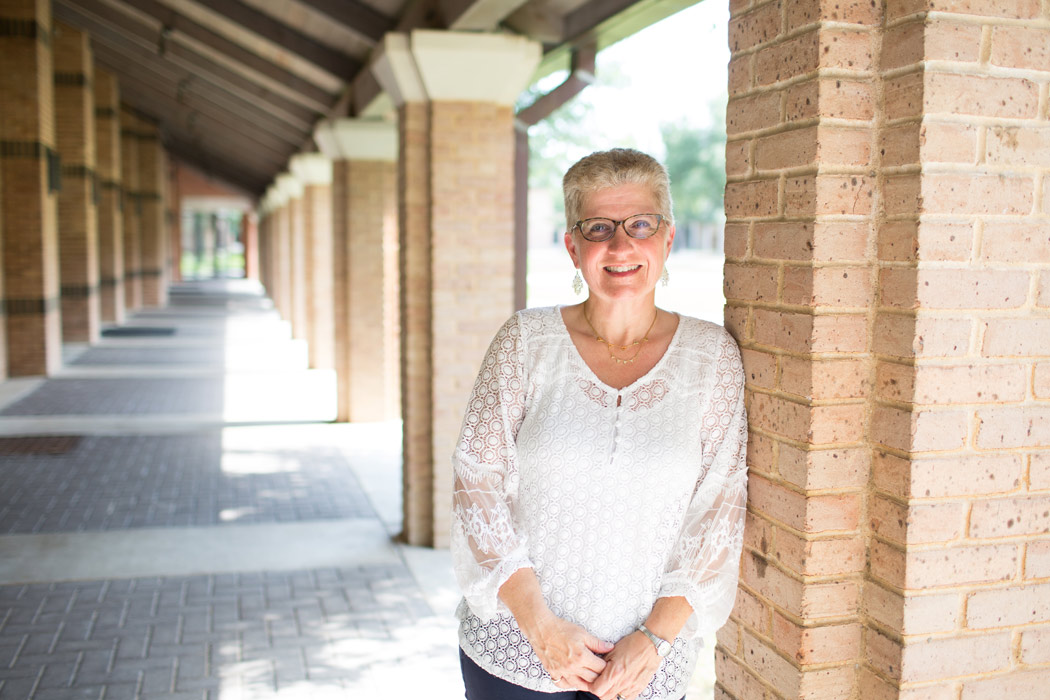
After evacuating New Orleans, Eve Herman and her family found support in the St. Mark’s community: Dr. Paul Seelman fled his home and lost his dog in the midst of Katrina. “It was a sad situation,” he says. “Life was just completely uprooted at the time.”: Photo by Rasy Ran
Two days before Katrina devastated New Orleans, Eve Herman went for a walk. She remembers the stroll vividly, because it was the last thing she did before deciding to evacuate. As her dog sniffed the ground, she and a neighbor weighed their options. The weather reports were so erratic, neither woman knew what to do.
“It was a weird hurricane,” Herman says. “They kept predicting different things. It was supposed to go up the East Coast, but every day it moved further and further west.”
Herman eventually determined it was safest to leave town. She was no stranger to hurricanes and remained relatively calm that Saturday as she and her family hauled their belongings to the second floor of their home to avoid water damage. The New Orleans native had fled the city on several occasions, but she didn’t know just how life-altering Katrina would be. On Monday, from a hotel room in Houston, she sat glued to the TV, watching in horror as she learned the levees had broken. The storm was unlike any she had seen before.
It was August, and her two children were about to enter the third and sixth grades. The news reports made it clear they wouldn’t be able to return to their normal schools, at least not right away. Her husband, David, is an attorney. His firm has offices in New Orleans, Baton Rouge and Dallas. Eve’s sister was staying in Baton Rouge, so she called her for advice.
“She just said, ‘There’s nothing here,’ ” Herman remembers. “ ‘There’s just one private school, and they are so overwhelmed. If you can help it, don’t come to Baton Rouge, because it’s a mess.’”
Since Dallas was the obvious choice, the Hermans evacuated to our neighborhood because family lived nearby. Her daughter, Stephanie, has dyslexia, so Eve enrolled her in Shelton School, which specializes in learning differences. It was a bit more challenging to find a place for her son, Jonathan. Eve’s cousins live in town, so, on Labor Day weekend, they drove her to St. Mark’s. Although it was a holiday, people were available to answer her questions about admission.
“We initially thought we were going to send our kids to public school because we couldn’t afford to pay all over again,” she says. “We had already paid tuition in New Orleans.”
She was relieved to learn St. Mark’s is affiliated with Isidore Newman, the school her son attended in Louisiana. Because of this, St. Mark’s enrolled Jonathan on a temporary basis at no cost.
“The St. Mark’s families were amazing,” Herman says. “They took us in, loaned us stuff for our apartment, had dinners to welcome us. One of the families loaned us their extra car. They were so friendly, helpful and genuine.”
By that point, Eve’s extended family had also relocated to Dallas. Her nephew’s Bar Mitzvah was scheduled to take place in New Orleans a couple weeks after Katrina. Because of Judaism’s respect for the life cycle, Bar Mitzvah dates are not flexible. If the young man couldn’t find a synagogue in Dallas willing to let him deliver his Torah portion, the ceremony would be postponed by a year. Luckily, Temple Emanu-El was eager to help. Renee Karp, the synagogue’s program director at the time, remembers accommodating the event.
“When someone has put all that effort into learning their Torah portion, you want to help,” Karp explains. “In the midst of chaos, when you go ahead with that life cycle event, you are reaffirming the things that are important. If you are a religious person and you believe in God that remains constant for you. It grounds you.”
The temple continued to support the Herman family with warmth and free tickets to High Holiday celebrations. Eve says she was blown away by our neighborhood’s generosity. She received employee discounts at many stores, and when her son went to Supercuts for a trim, the salon refused payment. In early December, things in New Orleans began to settle down. The Hermans returned to the city for about six months, but Eve’s husband had grown fond of Dallas. After much deliberation, they decided to move to Texas permanently. Though Eve misses aspects of New Orleans – her family, the culture, the festivals – Dallas now feels like home. Her love for this area is directly related to her experience as an evacuee.
“They were amazing to all of us,” she says. “It gave you restored faith in humanity.”
Weezie Margolis
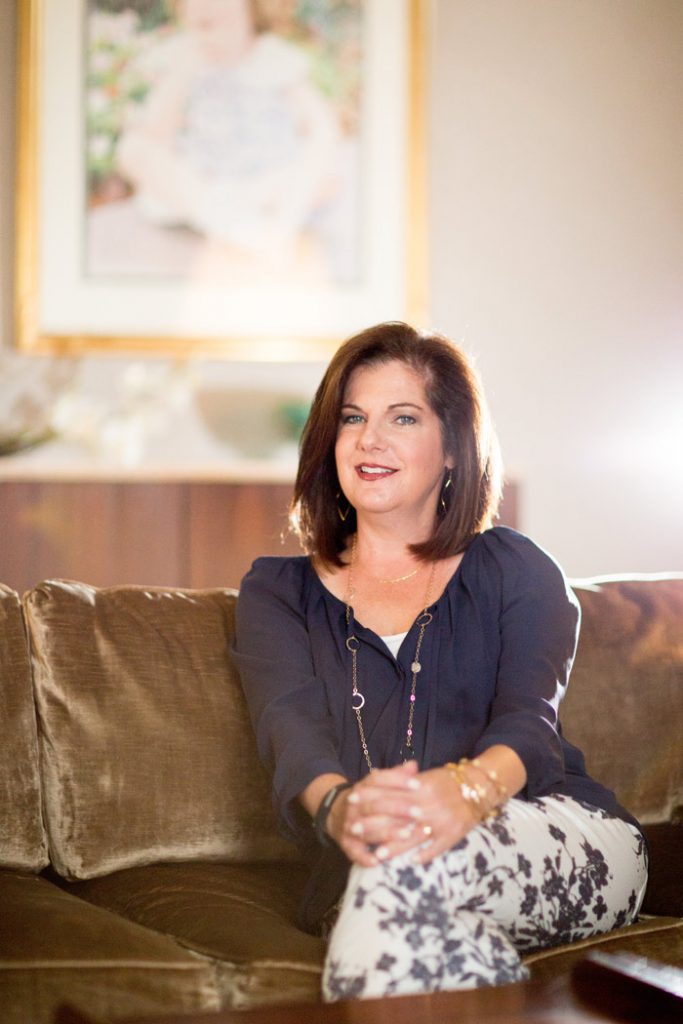
Weezie Margolis came to Dallas with her husband and two daughters right before Hurricane Katrina hit their New Orleans home. “There were no tears,” she says, “ because for such a long time, we didn’t know if our house was destroyed or not destroyed. There was a lot of ‘we don’t know, we don’t know.’ ”: Photo by Rasy Ran
Weezie Margolis’ love for Louisiana runs deep. She is a fifth-generation New Orleanian. Her family has lived in the city so long, she’s not even sure how they got there. Growing up in a tumultuous climate has made her very “weather aware.”
“My whole life they had been predicting that there was going to be this really bad storm,” Margolis says.
In 2005, it finally hit. At the time, she represented a line of women’s clothing and was supposed to be in Dallas for business a couple days after Katrina. When it became clear she needed to leave town sooner, she made some phone calls. In the months that followed, she’d make many more. In a way, this kept her sane.
“Everyday was a myriad of phone calls,” Margolis says. “For months and months and months. You didn’t really have time to just break down and cry.”
The first phone call she made was to Rosewood Crescent. She asked if the hotel could bump up her reservation and accommodate the rest of her family. They agreed and even extended the corporate rate. She also reached out to Southwest and was relieved when the airline helped her book an earlier flight. Her husband and their two daughters found seats on the same plane. In the airport, Margolis realized that tragedy breeds community.
“There were long lines of people waiting to check in,” she remembers. “But no one was upset. Everyone was like, ‘We’re all in this together.’ ”
Once in Dallas, Margolis connected with Mary Lee Broder, a Preston Hollow resident whose children attended the same summer camp as her daughters. Broder arranged play dates for Emily and Edie Margolis, to take their minds off the chaos. In the midst of so much uncertainty, Margolis was happy to see her children having fun. The family held it together, mostly because they had no other option.
“There were no tears because for such a long time we didn’t know if our house was destroyed or not destroyed,” she says. “There was a lot of ‘we don’t know, we don’t know.’ ”
Because of its location, the family’s home was relatively undamaged. But there was 5 feet of water on their street, and New Orleans was in ruins. They wouldn’t be able to return to the city any time soon, so they began planning their next move. They hoped to enroll their daughters at Greenhill, because it is coeducational and rigorous, much like the girls’ school in Louisiana. Greenhill was already in session, and because of this, Margolis worried her daughters wouldn’t get in. The phone calls continued.
“We called the moms of our children’s camp friends,” says Margolis, adding that many of the women live in Preston Hollow. “Everybody was like ‘We’ve got this covered. We’ll call the school and see if we can get them in on a temporary basis.’ ”
Our neighbors succeeded in their efforts, but the Margolis family still needed a place to stay. By then there were so many evacuees in Dallas, they couldn’t find a hotel. Mary Lee Broder offered her home. Ten years later, Weezie is still touched by Broder’s generosity, and the two women have become good friends.
“This was someone I didn’t really know,” she says. “Everybody just opened up their lives and their hearts to us.”
Broder was happy to help.
“We wanted to put ourselves out there,” Broder explains. “We would have wanted someone to do it for us. It was also a good way for my husband and I to demonstrate to our children what you do to make someone’s road easier.”
All in all, things were looking up. The girls loved Greenhill and Margolis’ husband quickly found work as an anesthesiologist. Because Texas had been good to them, the family decided to stay permanently. Shortly thereafter, they bought a home on Meadow Road.
Margolis’ world was forever changed by Katrina. She had lived in New Orleans most of her life and still pines for the food.
“I can get good food here, but it’s just different,” she says. “I really miss crawfish. The way they do them here is not the same.”
Still, Margolis has embraced Dallas. She has nothing but love for the city that offered her kindness when she needed it most. She’s also a generally optimistic, “glass half-full” person.
“You just make do with whatever life throws you,” she says. “It does make you a stronger person to realize you can deal with things you didn’t plan.”



